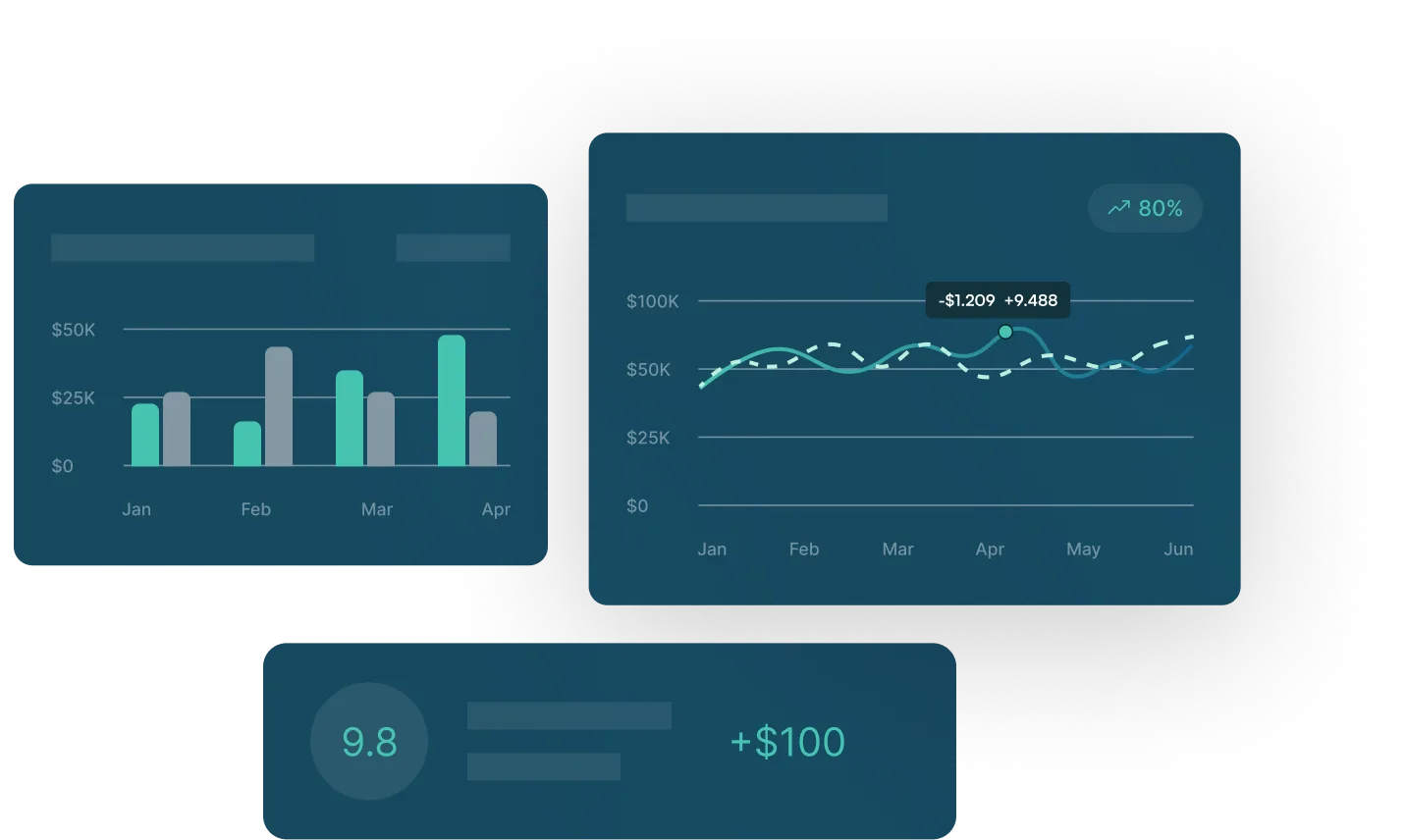How to Leverage Automation in Your FX Exposure Management Strategy


In today’s increasingly interconnected and volatile markets, managing foreign exchange (FX) risk and exposure is a critical challenge for CFOs and treasury teams. Currency fluctuations, market volatility, and geopolitical risks are constant threats that can disrupt financial performance and expose organizations to significant losses. Treasury teams must efficiently balance risk and return while ensuring visibility and accuracy in their operations. FX automation and exposure management offer transformative approaches to streamline FX exposure management and enhance risk mitigation strategies.
The Growing Complexity of Global Markets
Global markets are more volatile than ever, with external factors consistently impacting currency values. For example, significant geopolitical events such as Brexit and the ongoing Russia-Ukraine conflict have caused disruptions in global trade, leading to fluctuations in key currencies. Such events directly impact multinational companies’ financial performance, creating uncertainty around future cash flows and profitability.
In addition to geopolitical risks, recent economic developments, such as the U.S. Federal Reserve’s 50 basis point interest rate cut, have significantly influenced currency values. The rate cut is expected to lead to the depreciation of the U.S. dollar as FX currencies appreciate against it. This presents both challenges and opportunities for companies operating in regions where local currencies are set to strengthen against the dollar. In this context, FX automation becomes critical, enabling treasury teams to respond swiftly to these market changes and protect profitability when translating earnings back into USD.
Managing Market Volatility and Currency Fluctuations with Automation
To manage FX risk effectively, treasury teams must have visibility into their global exposures and the ability to consolidate and analyze large amounts of data from multiple systems. Unfortunately, many organizations still rely on manual processes to collect and manage FX exposure data, which is time-consuming, error-prone, and inefficient. This manual approach often leaves teams vulnerable to missed opportunities, over-hedging, or under-hedging, all of which can have serious financial consequences.
FX automation offers a solution to these challenges by streamlining the process of capturing and consolidating FX exposure data. Automated systems can pull data from multiple sources, including financial systems that gather financial planning and analysis data and enterprise resource planning (ERP) systems. This automation provides treasury teams with a real-time view of their global exposures. Enhanced visibility allows for quicker, more informed decision-making, ensuring that the organization is prepared to respond to sudden currency fluctuations or market changes.
For example, during periods of heightened volatility such as the COVID-19 pandemic, companies with automated FX risk management systems in place were better able to respond to rapid currency devaluations across emerging markets. These companies were able to quickly adjust their hedging strategies to minimize losses while those relying on manual processes struggled to keep up with the fast-paced market changes.
Enhancing Risk Mitigation Strategies with FX Automation
In addition to improving visibility into global exposures, FX automation also plays a crucial role in enhancing risk mitigation strategies. Automated systems can be programmed to execute trades or hedges automatically when certain market conditions are met, reducing the risk of human error and ensuring that the organization’s risk management strategy is executed consistently.
In particular, an automated FX system can monitor market movements and execute pre-defined hedging strategies when exchange rates reach a certain threshold. This proactive approach allows treasury teams to lock in favorable exchange rates and reduce exposure to adverse currency movements. Also, automation guarantees these trades are executed quickly and accurately and minimizes the operational risk of manual trading processes.
Another key benefit of FX automation is its ability to handle complex hedge accounting and reporting requirements. With automated systems, treasury teams can make sure their hedging activities are compliant with international accounting standards, such as IAS 39 and IFRS 9, and can generate the necessary reports to demonstrate compliance to auditors and regulators. This level of accuracy and transparency is critical in maintaining trust with stakeholders and avoiding costly regulatory penalties.
Balancing Risk and Return in a Volatile Global Market
It’s no longer enough for treasury teams to simply mitigate risk; they must also find ways to balance risk and return effectively. FX automation enables treasury teams to access real-time insights into global market conditions, empowering them to act quickly to capitalize on opportunities.
Consider a multinational corporation that operates in both Europe and the United States. With the euro experiencing periods of weakness against the U.S. dollar, the company’s revenue in euros becomes less valuable when converted back to dollars. However, with an automated FX system in place, the treasury team can monitor these currency movements in real time and implement hedging strategies to protect the company’s profit margins. The ability to react quickly to market changes helps organizations strike the right balance between minimizing risk and maximizing returns.
Conclusion: Why FX Automation is the Future of Treasury
FX automation has become a necessity for global companies seeking to future-proof their treasury operations. Automated systems improve visibility into global exposures, enhance risk mitigation strategies, and empower treasury teams to make more informed decisions that balance risk and return.
As companies face increasing FX risks, adopting a comprehensive FX automation solution is no longer optional—it’s essential. This is where GTreasury’s Advanced FX Workflows solution comes in. With automated FX exposure management, integrated hedge decisioning, and efficient settlement processes, GTreasury’s Automated Workflows helps CFOs and treasury teams streamline their FX risk management processes, reduce operational risks, and ensure accuracy across global markets.
By embracing automation for FX exposure management, companies can not only protect themselves from market volatility but also position themselves to thrive in an increasingly complex and dynamic global market. For more information on GTreasury’s Advanced FX Workflows, schedule a one-on-one consultation with our team of risk experts.
How to Leverage Automation in Your FX Exposure Management Strategy
In today’s increasingly interconnected and volatile markets, managing foreign exchange (FX) risk and exposure is a critical challenge for CFOs and treasury teams. Currency fluctuations, market volatility, and geopolitical risks are constant threats that can disrupt financial performance and expose organizations to significant losses. Treasury teams must efficiently balance risk and return while ensuring visibility and accuracy in their operations. FX automation and exposure management offer transformative approaches to streamline FX exposure management and enhance risk mitigation strategies.
The Growing Complexity of Global Markets
Global markets are more volatile than ever, with external factors consistently impacting currency values. For example, significant geopolitical events such as Brexit and the ongoing Russia-Ukraine conflict have caused disruptions in global trade, leading to fluctuations in key currencies. Such events directly impact multinational companies’ financial performance, creating uncertainty around future cash flows and profitability.
In addition to geopolitical risks, recent economic developments, such as the U.S. Federal Reserve’s 50 basis point interest rate cut, have significantly influenced currency values. The rate cut is expected to lead to the depreciation of the U.S. dollar as FX currencies appreciate against it. This presents both challenges and opportunities for companies operating in regions where local currencies are set to strengthen against the dollar. In this context, FX automation becomes critical, enabling treasury teams to respond swiftly to these market changes and protect profitability when translating earnings back into USD.
Managing Market Volatility and Currency Fluctuations with Automation
To manage FX risk effectively, treasury teams must have visibility into their global exposures and the ability to consolidate and analyze large amounts of data from multiple systems. Unfortunately, many organizations still rely on manual processes to collect and manage FX exposure data, which is time-consuming, error-prone, and inefficient. This manual approach often leaves teams vulnerable to missed opportunities, over-hedging, or under-hedging, all of which can have serious financial consequences.
FX automation offers a solution to these challenges by streamlining the process of capturing and consolidating FX exposure data. Automated systems can pull data from multiple sources, including financial systems that gather financial planning and analysis data and enterprise resource planning (ERP) systems. This automation provides treasury teams with a real-time view of their global exposures. Enhanced visibility allows for quicker, more informed decision-making, ensuring that the organization is prepared to respond to sudden currency fluctuations or market changes.
For example, during periods of heightened volatility such as the COVID-19 pandemic, companies with automated FX risk management systems in place were better able to respond to rapid currency devaluations across emerging markets. These companies were able to quickly adjust their hedging strategies to minimize losses while those relying on manual processes struggled to keep up with the fast-paced market changes.
Enhancing Risk Mitigation Strategies with FX Automation
In addition to improving visibility into global exposures, FX automation also plays a crucial role in enhancing risk mitigation strategies. Automated systems can be programmed to execute trades or hedges automatically when certain market conditions are met, reducing the risk of human error and ensuring that the organization’s risk management strategy is executed consistently.
In particular, an automated FX system can monitor market movements and execute pre-defined hedging strategies when exchange rates reach a certain threshold. This proactive approach allows treasury teams to lock in favorable exchange rates and reduce exposure to adverse currency movements. Also, automation guarantees these trades are executed quickly and accurately and minimizes the operational risk of manual trading processes.
Another key benefit of FX automation is its ability to handle complex hedge accounting and reporting requirements. With automated systems, treasury teams can make sure their hedging activities are compliant with international accounting standards, such as IAS 39 and IFRS 9, and can generate the necessary reports to demonstrate compliance to auditors and regulators. This level of accuracy and transparency is critical in maintaining trust with stakeholders and avoiding costly regulatory penalties.
Balancing Risk and Return in a Volatile Global Market
It’s no longer enough for treasury teams to simply mitigate risk; they must also find ways to balance risk and return effectively. FX automation enables treasury teams to access real-time insights into global market conditions, empowering them to act quickly to capitalize on opportunities.
Consider a multinational corporation that operates in both Europe and the United States. With the euro experiencing periods of weakness against the U.S. dollar, the company’s revenue in euros becomes less valuable when converted back to dollars. However, with an automated FX system in place, the treasury team can monitor these currency movements in real time and implement hedging strategies to protect the company’s profit margins. The ability to react quickly to market changes helps organizations strike the right balance between minimizing risk and maximizing returns.
Conclusion: Why FX Automation is the Future of Treasury
FX automation has become a necessity for global companies seeking to future-proof their treasury operations. Automated systems improve visibility into global exposures, enhance risk mitigation strategies, and empower treasury teams to make more informed decisions that balance risk and return.
As companies face increasing FX risks, adopting a comprehensive FX automation solution is no longer optional—it’s essential. This is where GTreasury’s Advanced FX Workflows solution comes in. With automated FX exposure management, integrated hedge decisioning, and efficient settlement processes, GTreasury’s Automated Workflows helps CFOs and treasury teams streamline their FX risk management processes, reduce operational risks, and ensure accuracy across global markets.
By embracing automation for FX exposure management, companies can not only protect themselves from market volatility but also position themselves to thrive in an increasingly complex and dynamic global market. For more information on GTreasury’s Advanced FX Workflows, schedule a one-on-one consultation with our team of risk experts.

See GTreasury in Action
Get connected with supportive experts, comprehensive solutions, and untapped possibility today.





























.png)





.png)
.png)







.png)











.jpeg)

.jpeg)


.jpeg)







.jpeg)

.jpeg)





.jpeg)


.jpeg)

.jpeg)








.jpeg)


.jpg)





.jpg)

.jpg)





